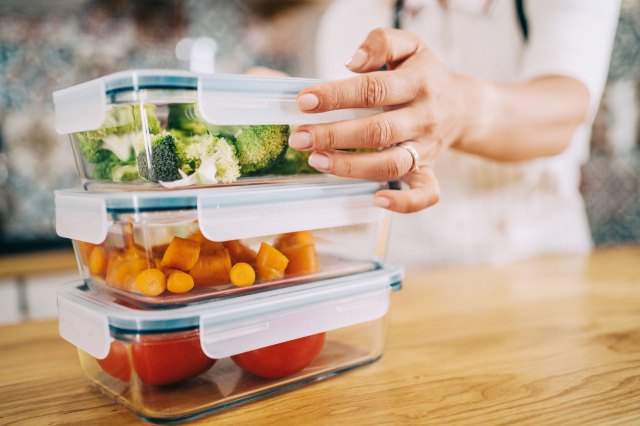Setting a budget is hard enough for you and your partner — but kids are both expensive and wildly unpredictable. What used to be a simple grocery budget needs to accommodate growing bodies and picky preferences. Utility bills stretch to encompass extra laundry and baths. All those diapers, upsized shoes, and school supplies add up. This is all, of course, after childcare eats up a percentage of your income. Looking for a few pointers? These budgeting tips for parents won’t solve all your problems, but they may just help you squeeze more out of every dollar.

Establish Non-Negotiables
When setting your budget, it’s helpful to separate must-haves from nice-to-haves. As a jumping-off point, list the things you absolutely cannot cut (and are hard to modify), like your rent or mortgage, insurance, utilities, childcare, and your minimum budget for other essentials like groceries. It will give you an idea of how much discretionary spending you actually have and help reduce surprises down the road.

Shop Secondhand First
So many children’s products are only useful for a limited period — those three-to-six-month onesies, baby shower decorations, and Halloween costumes that only fit them for one year. Instead of tossing them or storing these items, many parents search for new homes, meaning you can find a lot of secondhand clothes, toys, and products wherever you look. Before you buy something new, try browsing reselling websites like Facebook Marketplace, Mercari, Poshmark, or ThredUP. Worried about safety? Good Buy Gear quality-checks all its items before listing them for sale, and you can check for specific product recalls on the United States Consumer Safety Commission’s website. You can also shop in person at local garage sales, thrift stores, and consignment shops, and even find stuff for free on your local Buy Nothing group.
Shopping secondhand can also offer some inspiration. Stuck on a birthday theme? Search for party supplies to see what other parents have already put together.
There are some items you’ll want to buy new or nearly new for safety reasons, like car seats, but you can make a little extra room in your budget for nicer new things by shopping secondhand when you can.

Check For Local Assistance Programs
If you’re having trouble affording the bare necessities, check for local programs that can help with expenses like daycare, preschool, and utilities. Even if you don’t meet the guidelines for federal assistance programs, some municipalities have different criteria based on living costs. You may also qualify for special rates for sports and other recreation programs, whether it’s through a community center or a nonprofit like the YMCA.
Reader Favorites

Involve the Kids
Learning good budgeting early on can help set your kids up for success later in life — and answer questions about where the family’s money goes. Set a budget for a grocery trip and, if it’s age-appropriate, let your kids help you make choices that fit the limit. Involve them in decisions about family activities for the month. For larger, longer-term saving goals, visualize your progress with colorful charts.

Check Grocery Deals in Advance
This tip’s an oldie but a goodie: Keep an eye out for coupons and plan your meals around what’s on sale at your local grocery stores. You may even get inspiration for something you’ve never cooked or a new spin on one of your weeknight staples.
Cutting coupons can take a lot of time, but technology has made it easier. Many stores, like Target, Kroeger, and Safeway, have apps that connect coupons to rewards cards, making it easier to plan. Third-party apps can also be useful, like Flipp, which compiles store circulars in your area.

Try Weekly Meal Planning
Save money, time, and sanity by planning a week of meals in advance. Looking at the week, you can shop more efficiently and use all those groceries you got on sale in multiple dishes. Plus, with advanced meal prep and planning, you’ll reduce last-minute takeout and delivery. If you’re using ingredients that won’t keep all week, either plan to use them toward the beginning of the week or make special smaller trips. You can involve the whole family in meal-planning for the week, too — just make sure you retain ultimate decision-making power so things don’t go off the rails.

Learn Simple Clothing Repairs
Not everyone has the time to master sewing clothes from scratch, but you don’t have to be a sewing whiz or even own a sewing machine to do some basic repairs like ripped seams and missing buttons. A set of needles and a few spools of thread can really help replacement savings add up in the long run and help your kids’ clothes last until they grow out of them. Many free tutorials are available on YouTube, eHow, and sewing blogs.

Plan for the Holidays Year-Round
An empty bank account can take the fun out of a celebration. Birthdays and other gift-giving holidays (like Christmas or Hanukkah) can get exceptionally pricey, and the food alone for feasting holidays (like Thanksgiving) can be a strain. The good news is that you know exactly when they’re coming. Saving for holidays year-round, or at least a few months in advance, can help soften the budgetary blow and give you a chance to shop sales for things you’ll know you need before they’re more in demand.

Trim Your Streaming Subscriptions
Payments of $5 or $15 here and there don’t seem like large expenses, but they can add up with the amount of streaming services available today. Sit down with your family and establish what platforms you actually use — and which ones you can ditch. If you only use some to watch a few shows, consider canceling your subscription until they’re in season again. Once you know which ones you’re keeping, check for bundling deals that could help you save more money, like the Hulu, Disney, and ESPN package, and for ad-supported versions that could shave off some of the cost.
Featured Image Credit: fotostorm/ iStock
More From Our Network
Better Report is part of Inbox Studio, which publishes content that uplifts, informs, and inspires.














